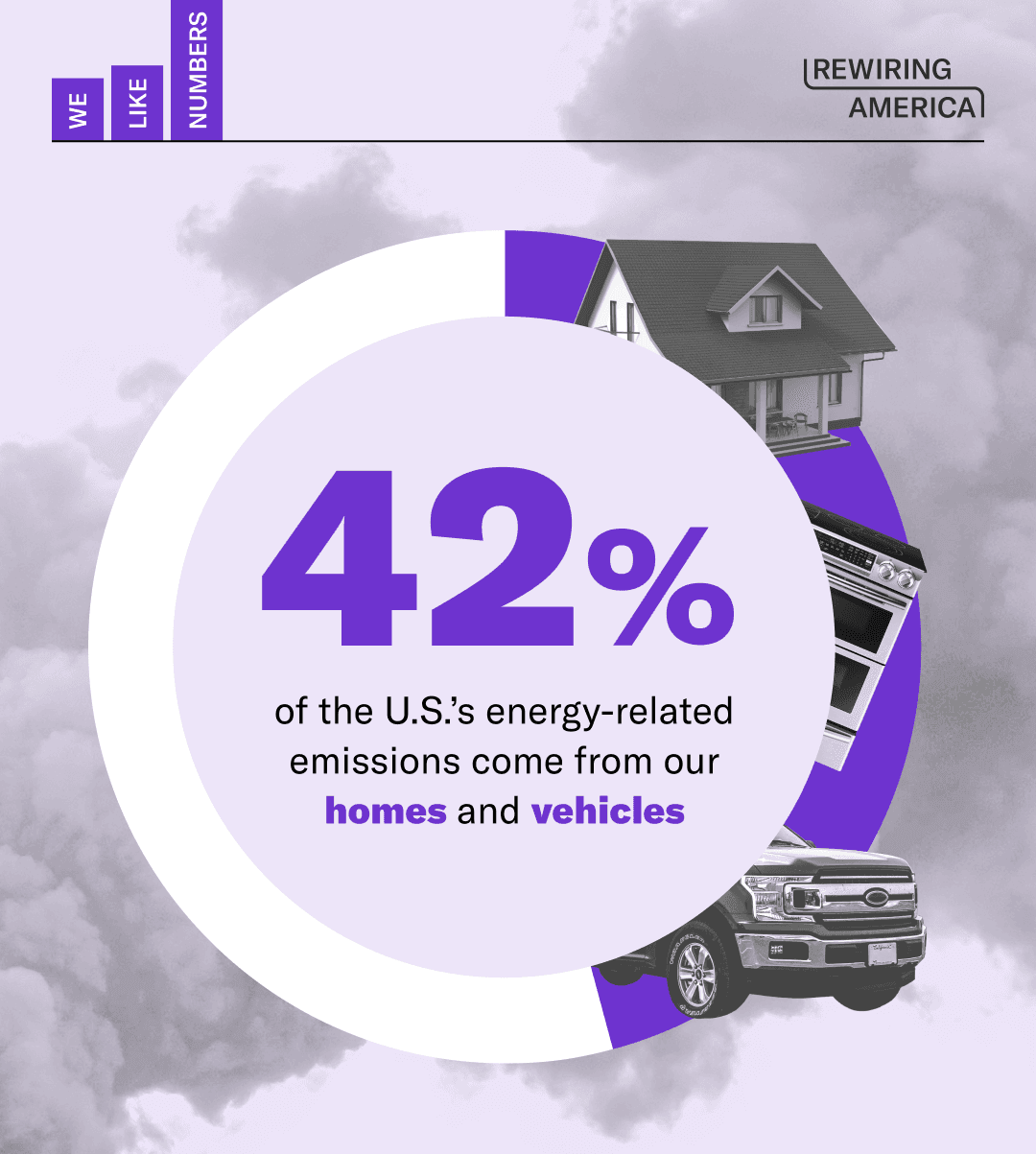42 percent — our guiding statistic
It’s how much of our country’s energy-related emissions come from our homes and vehicles. And we have the power to change it.

Rewiring America founder, engineer, and inventor Saul Griffith lays out some stark, but actionable math in his book, Electrify: An Optimist’s Playbook for Our Clean Energy Future.
The choices we make about our home appliances and vehicles have a big impact on the climate. Griffith’s insight was the foundation for Rewiring America itself, and why we worked so hard to make sure there was money to swap out gas machines for electric ones in the Inflation Reduction Act (IRA).
When so much of the climate crisis can inspire a hands-thrown-up sense of resignation that the damage is done or that no amount of personal action will ever change things, Griffith’s insight is full of hope and opportunity. Average Americans can take definitive action. For example, they can proactively research what type of heat pump they might need in their home when their gas furnace breaks so they get a sense of their options, cost, and contractor contacts when it comes to converting their heating and cooling to all-electric.
Forty-two percent of energy-related emissions in the U.S. come from how we heat and cool our homes, heat our water, dry our clothes, cook our meals, and how we power it all.1
That formative 42 percent number is the space where Rewiring America steps into the game, working to connect homeowners with rebates and incentives; educating consumers about all of the fossil-fueled appliances in their homes they can convert to electric; and ensuring electrification is accessible to all so that equity and fairness underpin that work.
That 42 percent puts the power into the hands of ordinary Americans to make better, cleaner, more comfortable choices that will enhance their quality of life while also mitigating the emissions that are causing real harm to the planet. Coupled with policy changes that will also support a decrease in emissions, America is on a course to positive, impactful change.
Learn how you can electrify everything — from your cooktop to your car — in our guides for homeowners and renters!
The source for this figure, which fluctuates slightly over time, comes from the EPA's 2023 Annual Greenhouse Gas Inventory, which has data from 2021. We start with Table 2-10 (Raw-Economic Sector): U.S. Greenhouse Gas Emissions Allocated to Economic Sectors (MMT CO2 Eq. and Percent of Total in 2021), then distribute electricity among the economic sectors using Table 2-12: U.S. Greenhouse Gas Emissions by Economic Sector and Gas with Electricity-Related Emissions Distributed (MMT CO2 Eq.) and Percent of Total in 2021. We calculate the percent of energy-related emissions and verify that it matches Table 2-3: Recent Trends in U.S. Greenhouse Gas Emissions and Sinks by IPCC Sector/Category (MMT CO2 Eq.) Unlike the EPA, we don't include "Non-Energy Use of Fuels" as energy-related. We then calculate the percent of emissions attributable to households, which can require breaking a line item like transportation emissions from combusting fossil fuels into household and non-household pieces. We also break the emissions from fossil fuel production & transportation, which are part of the industrial sector, into their household and non-household pieces.


